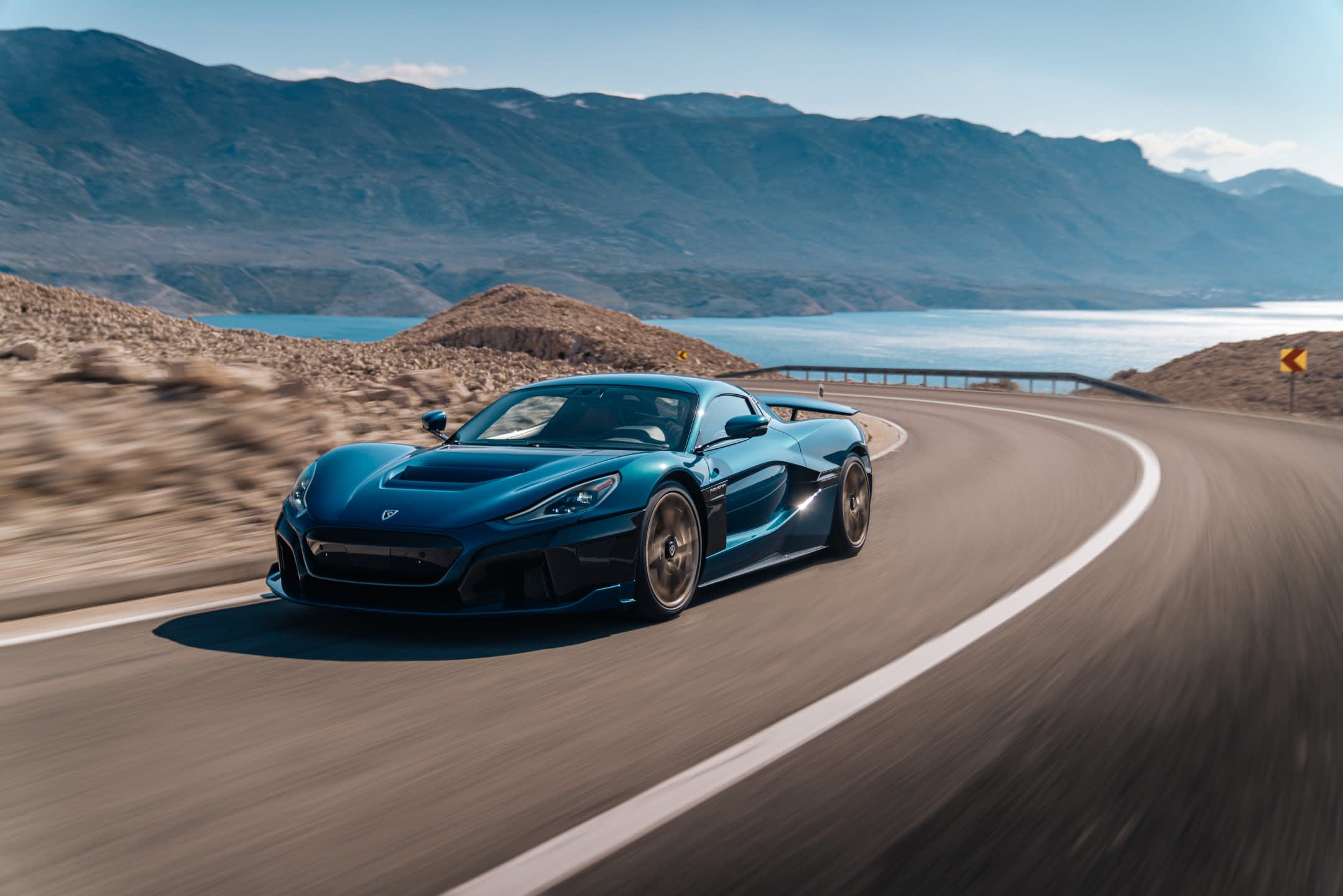MALIBU, California – The most surprising thing about the $2.1 million Rimac Nevera is how easy it is to get in and drive.
The Nevera is an electric hypercar from Croatia. It sits low – so low – to the ground that at first glance it can be cumbersome to enter. But the doors, which lift up and out like a Lamborghini, are cut into the roof enough to ensure I don’t hit my head when I lower myself into the driver’s seat.
It takes a bit of learning to get started. Gears are changed via a large knob to the left of the steering wheel, power seat adjustments are hidden on the touchscreen, and switches for the turn signals and headlights are mounted directly on the steering wheel. But once you get it down, it’s easy to run.
The whole car is like that – easy to drive – despite its 1,914 horsepower.
One of the first things I noticed when we started was that it was easy to look out of Nevera. Not a given with cars like this. For example, in Ferraris and Lamborghinis and other low-slung highway rockets, it’s often a challenge to see what’s behind you. But while the Nevera is certainly low-slung, the rear window is large enough for easy driving in highway traffic. Good side mirrors will definitely help with that.
There’s also enough engine noise to remind you that you’re in a hypercar. There may not be an engine, but there are four electric motors, and they make mellow engine sounds as the car moves down the road. It was too loud for me to have a reasonable conversation with my passenger, Rimac’s Ryan Lanteigne. It’s loud enough to remind you that you’re driving something special.
The Nevera is really quite special – it should cost more than $2 million. See why in the video.
Rimac — pronounced REE-mahtz, roughly — is Croatia’s first and only automaker. Its 35-year-old founder, Matt (MAH-ta) Rimac, started tinkering with electric vehicles after blowing an engine in an old BMW he raced as a teenager. After rebuilding it with an electric drivetrain – and winning a few races – he founded Rimac Automobile in 2009, hoping to one day build an electric supercar in his home country.
While Rimac’s early years were a struggle, as automakers around the world moved to electrify their fleets, Matt’s time was better in retrospect.
Rimac’s early prototypes were impressive enough to attract significant investments from Hyundai and Porsche, and it raised another 500 million euros (or about $534 million) last year. They served as the foundation of a now-burgeoning business consultancy for traditional automakers interested in developing high-performance EVs. Aston Martin and Swedish supercar maker Koenigsegg are among Rimac’s customers, and the company says it can’t yet disclose more.
Nevera is named after the fierce summer storms that come towards Croatia from the Adriatic Sea. (Rimac employees like to say that the Naveras — storms — are “very powerful and charged with lightning,” just like their car.)
The Nevera (car) serves as a rolling display of Rimac’s EV expertise and the supercar that Mad Rimac has long dreamed of building. It’s a four-motor design – one for each wheel – with a 120 kilowatt-hour battery pack, enough for a range of around 300 miles under normal driving conditions.
But there is nothing ordinary about Nevera’s power output. Those four motors put out a total of 1,914 horsepower and 2,360 Newton-meters of torque — enough to hit a top speed of 258 mph. Zero to 60 mph takes 1.74 seconds, according to Rimac.
I haven’t verified that timing with any great accuracy, but I can attest that such power thrust is plausible. As friendly as it is to drive in traffic, the Nevera is incredibly quick when fully unfurled. But it never feels out of control, and it’s a remarkable engineering feat.
The way those four motors work together is more subtle, but still impressive. The car’s systems adjust each motor’s power output 100 times per second to ensure optimal handling from moment to moment. Or, to put it another way, the Nevera blasts in and out of tight corners without hesitation. A trick other supercars can only follow with braking.
It’s an even more impressive trick given the car weighs around 5,100 pounds. But as hard as it may be to believe, that weight is so well packaged, the batteries are mounted so low and so close to the center of the Nevera that it’s hardly noticeable. (Of course, the huge power in the tube helps.)
It’s a good looking car, low and serious but not over the top. Fashionable. It’s well-made, with flawless carbon fiber on the exterior and comfortable leather throughout. Croatia has no car-making tradition, but the Nevera reflects some national pride: in addition to the car’s name, the intakes on its sides resemble a cravat, a Croatian invention dating to the ancestor of the modern necktie. Until the 16th century.
The Nevera starts at just over 2 million euros, or $2.1 million. If this is in your price range, speak up soon. Rimac says it only plans to build 150 of them.

